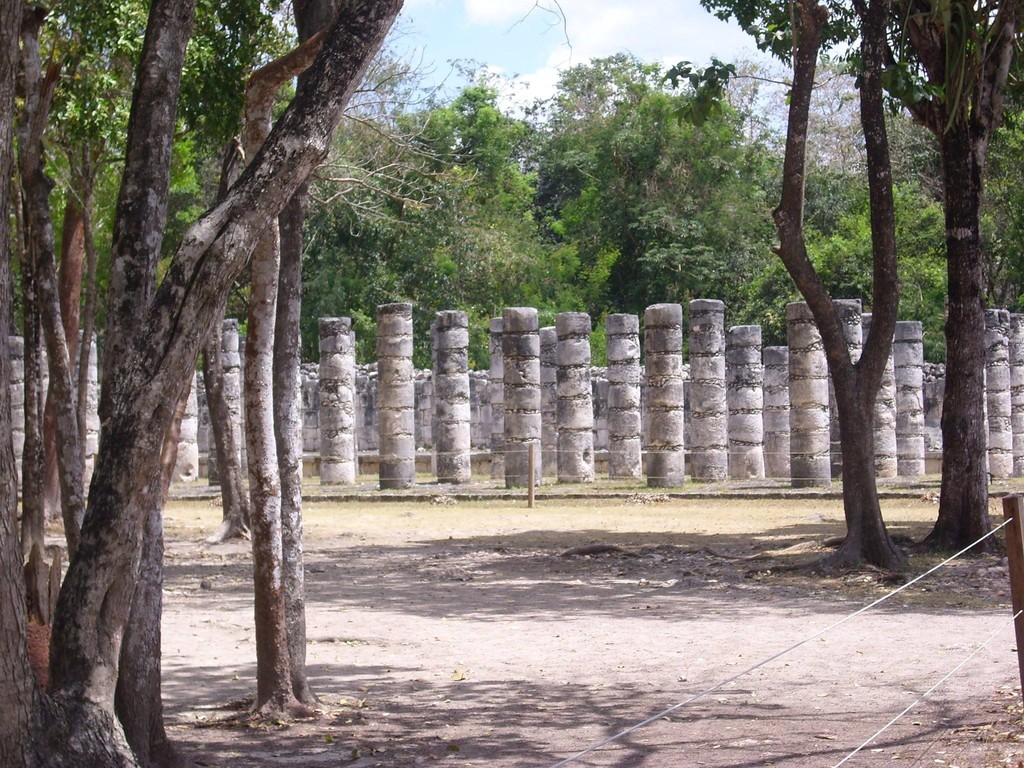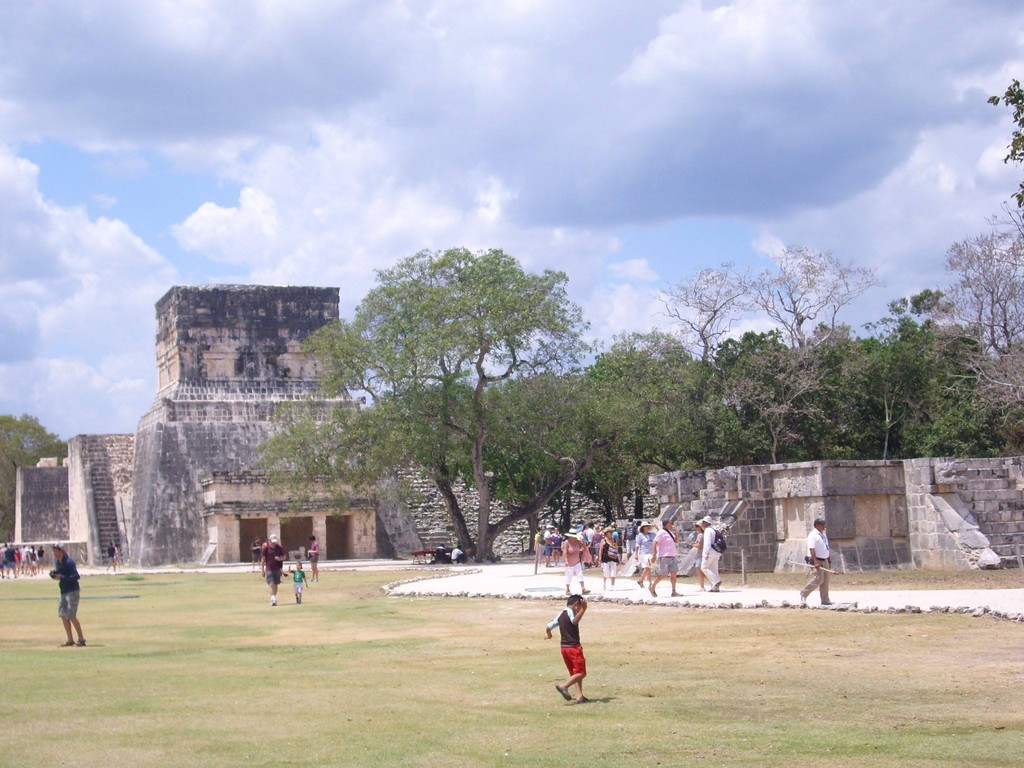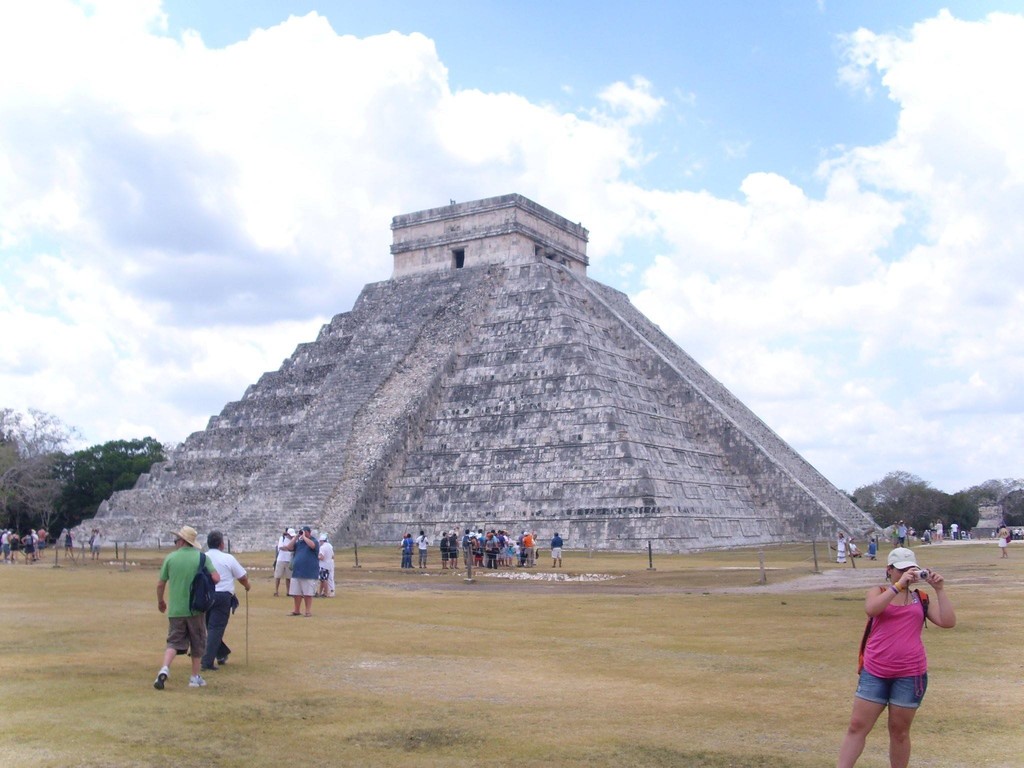Chichén Itzá
Chichén Itzá is one of the most important tourist attractions in Mexico. It's located in the Yucatán peninsula and is famous for the archaeological remains which came from the Mayan civilisation.
Normally it's a must-do trip of any tourist agenda; it's a huge esplanade with enormous remains of Mayan ruins and old buildings as well as its famous pools/wells. To get there, you usually have to take a guided bus, in my case, it was the tourist programme which took us to a different place everyday, so you don't have to worry, above all because Mexico can be fairly dangerous and it's better to go around with a guide than going by yourself.
When I got there, the heat was so intense, a humid and sticky heat so I advise that you wear little clothing because you'll end up sweaty, furthermore, there is a lot of mosquitoes so applying repellent beforehand wouldn't be a bad idea.
It's fundamental that you go with a tour guide, we had an aboriginal who explained everything perfectly to us, he even said that the majority of guides are descendants of the Mayans or they had some sort of ancestral relation. The end of the Mayan civilisation is supposedly a mystery since they disappeared in a way which was more or less sudden and it's not known if it was thanks to internal wars or for some type of activity related to their religious beliefs, either way, I didn't really trust what the guide told us.
What is certain is that during the guided visit, they will be taking you around in an organised way around different historical points and culturally important places from the Mayan civilisation which are found in this area whilst the history of each place is explained.

Something which caught my attention the most was a place where the Mayans used to play a traditional game called "the game of the ball", it was kind of like the football of their days, but the difference is that they Mayan game was more or less a ritual to the gods. They played in two teams and the objective was to get a ball into one of the hoops on the playing field; the rest of the town and Mayan chief would stand around the pitch and the match could last for quite a long time because the pitch was quite big and the players could only use certain parts of the body to pass the ball.
To demonstrate the good acoustics of the pitch, the guide told a few of us to go to the other end of the field, and by simply talking to the wall, we could hear him on the other side of the field. It was very impressive.
Apparently, the person who would stand in goal would have the honour of dying for the Mayan gods, truly crazy I know, although it was not exactly like that in other Mayan civilisations, the guide told us.

Something very strange made me laugh at the beginning of the tour, because it soon becomes a little repetitive, was that the natives imitated jaguar noises (it's the traditional animal of Mexico) through a type of small, strange whistle which they try and sell you, so much so that whilst you are looking at the old Mayan buildings, you can continuously hear that sound.
There are a lot of shops on the tourist route, I bought myself a Mayan chess set, there are pots with the shapes of Mayan gods on them and a lot of souvenirs; it's worth buying something to have as a memory since it doesn't cost a lot and you can haggle with the seller. I still have what I bought and each time I look at it, I think that it's beautiful. On these types of trips, you always have to buy some sort of souvenir for your family, so you can kill two birds with one stone.
The main part of the route around Chichén Itzá is the Kukulkán temple which I'm sure you will recognise in the photo. It's perhaps one of the most famous architectural icons in the world and it represents the Mayan culture in all its splendour.

It's shaped like a pyramid and although I don't know the exact dimensions, it's quite impressive. When I went, they weren't allowing anyone to go up, some people said that it was because the stairs are deteriorating and others say that it's because recently, a tourist fell and had died and it was already the second time that had happened. However, it used to be possible to go up the Mayan pyramid.
The temple has a lot of steps from the days it was built, although it doesn't seem like that. Each minute part of the Mayan structures and monuments are looked after and cared for with minimal detail to worship their god, Kukulkán.

When we got to the temple, the guide wanted to show us how well sounds travels, so standing in front of the pyramid and clapping two or three times, we say how sound was transmitted to the upper part of the temple where an echo was produced which resembled the name of the god - simply astonishing.
To end the journey, we went to a building where the Mayans used to go to in order to study the stars. This civilisations interest in astronomy is well-known, which is the origin of predictions such as "the end of the world" in 2012. I have to say that the guide told us that the Mayan calendar "predicting the end of the world" was a lie and instead, it simply referred to a generational change of the climate on Earth which we were able to check with the arrival of said year - nothing bad happened fortunately.
The Mayans were the ones who discovered different stars which are still studied today; studying the constellations always has a mystic origin and relates back to rituals.
The negative point about the visit is that the heat was horrible, so much so that it made me dizzy and there wasn't a single shady place where I could take a break from the sun and recuperate. If you could have seen me following behind my friends with a red face and wanting to go back to the hotel, it would get rid of any desire of wanting to come, but you know you can be prepared and wear a cap or visor.
To end our visit, they took us to some nearby pools/wells, although they did not take us to the ones that we could swim in but to another one outside of Chichén Itzá. It's weird to think that some of them were fundamentally used for human sacrifices of kids or teenagers.
To conclude simply, if you go to Mexico, you have to see this part of the Yucatán peninsula, it's very recommendable for the historical relevance of the place and to get to know a little more about the old Mayans.
Photo gallery
Content available in other languages
- Español: Chichén Itzá
- Polski: Chichén Itzá
Rate and comment about this place!
Do you know Chichén Itzá? Share your opinion about this place.



















